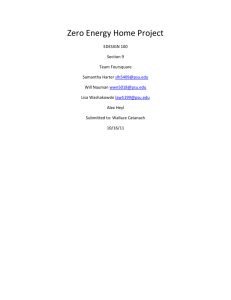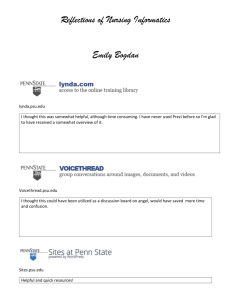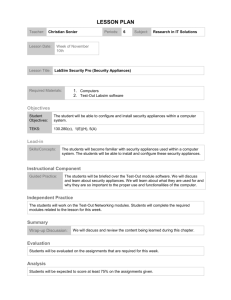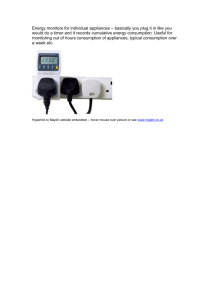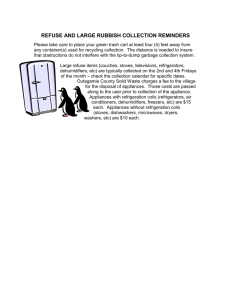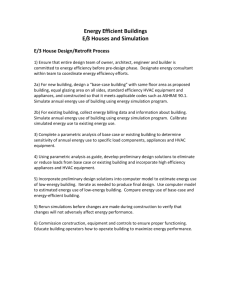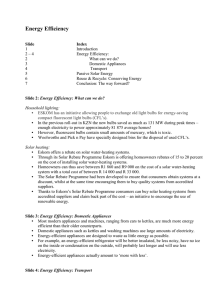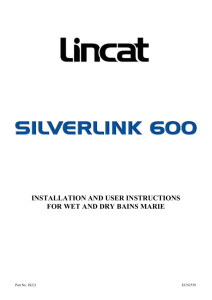Design Project 1 - Zero Energy Home
advertisement
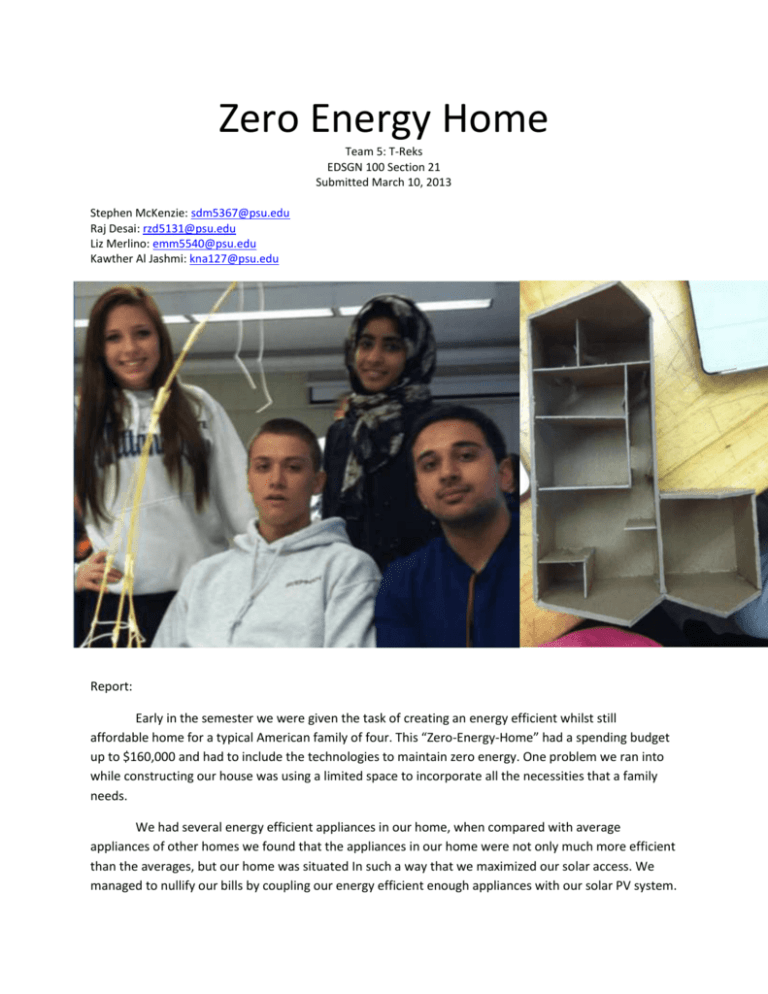
Zero Energy Home Team 5: T-Reks EDSGN 100 Section 21 Submitted March 10, 2013 Stephen McKenzie: sdm5367@psu.edu Raj Desai: rzd5131@psu.edu Liz Merlino: emm5540@psu.edu Kawther Al Jashmi: kna127@psu.edu Report: Early in the semester we were given the task of creating an energy efficient whilst still affordable home for a typical American family of four. This “Zero-Energy-Home” had a spending budget up to $160,000 and had to include the technologies to maintain zero energy. One problem we ran into while constructing our house was using a limited space to incorporate all the necessities that a family needs. We had several energy efficient appliances in our home, when compared with average appliances of other homes we found that the appliances in our home were not only much more efficient than the averages, but our home was situated In such a way that we maximized our solar access. We managed to nullify our bills by coupling our energy efficient enough appliances with our solar PV system. To start this project, we at T-REKS had high hopes of a two story mega-building littered with solar panels and aesthetically pleasing external design qualities. We quickly found out that the budget we were given would not allow for such an extravagant lifestyle, especially when considering we had not calculated the expenses of our amenities. In order to eliminate costs, we decided to go with a one story beach-house like concept. Since our spending was still more than what we had originally anticipated, we began reducing square footage and repositioning rooms to create as much useable space as possible within our new limits. Another problem we ran into was the positioning of windows on the southern side of the house. We wanted to maximize window space while also maintaining privacy in rooms that needed it, for instance the bathroom, which happens to be on the southern side of the house. We solved this problem by positioning the window higher on the wall and making the window wider than taller, this made sure that privacy was kept within the walls of the bathroom. We decided to go with an open kitchen and living room design because we preferred an open atmosphere opposed to a room by room office-like layout. Our house faces the south and we designed our roof with a 30 degree incline to maximize solar accessibility. Our PV was approximately 4.67 and we decided to build primarily with brick and concrete (two of the more efficient thermal masses) in order to retain and distribute heat throughout our premises. Our wall insulation had an R-value of R40 and our ceiling was equipped with R60 insulation so regardless of the season and temperature outside the home, we could maintain a comfortable living environment indoors. The entirety of our appliances were energy-star approved and cost-efficient and after comparing our expenses in that department with the average price of the very same types of appliances in the typical US home, we found that we had saved over $1,500. To conclude, we successfully designed, modeled, and created our zero energy home while spending just under our set financial budget of $160,000. Although we could not find a cost effective way to build our dream “Mega-Home,” we managed to construct a zero energy home without skimping out on many of our desired concepts and plans.

